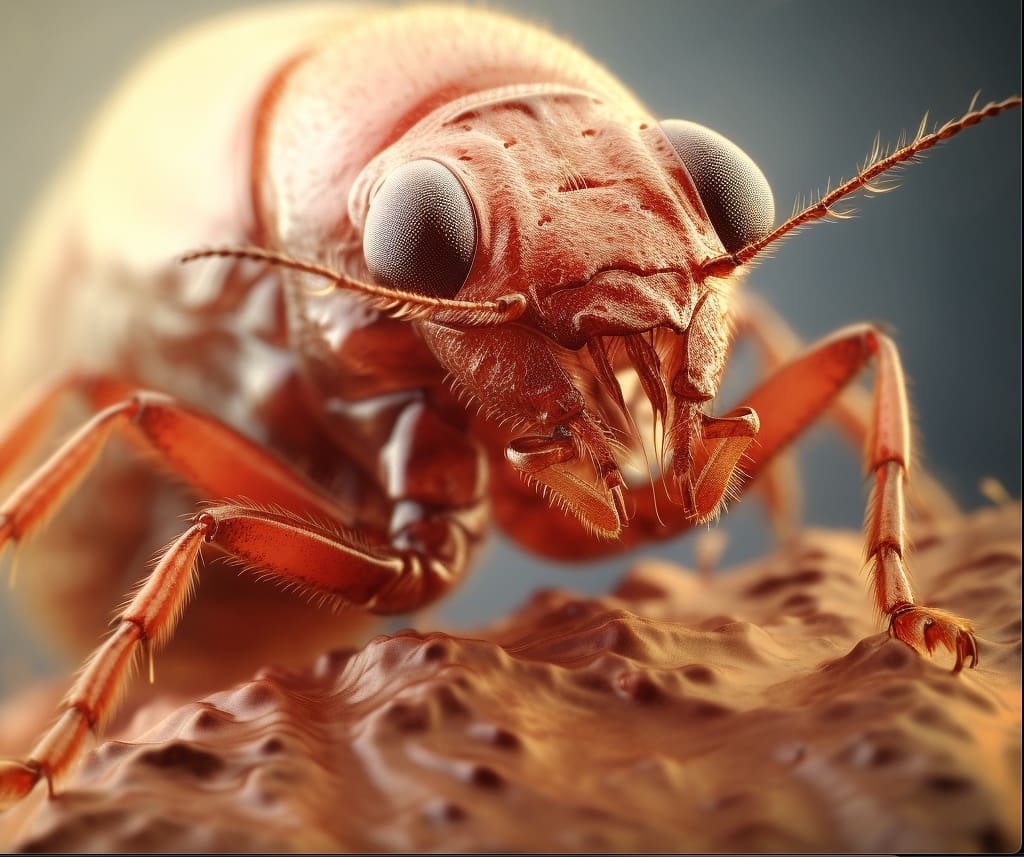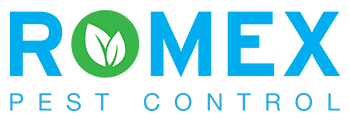
Are you battling a flea infestation in your home? You're not alone. Fleas can be a persistent problem, frustrating even the most diligent pet owners. These tiny pests don't just affect your furry friends; they can quickly take over your entire living space.
Effective flea control requires a comprehensive approach. It's not just about treating your pets; you'll need to simultaneously tackle the problem in your home and yard. Understanding the flea life cycle is crucial, as some stages can resist traditional treatments. With the right knowledge and tools, you can break the cycle and reclaim your home from these pesky invaders.
Key Takeaways:
- Use products with permethrin, imidacloprid, or dinotefuran to kill adult fleas effectively.
- Incorporate insect growth regulators (IGRs) like methoprene or pyriproxyfen to prevent flea eggs and larvae from developing.
- Apply topical treatments such as shampoos, spot-on applications, or collars directly to your pets.
- Administer systemic treatments like tablets or injectables for internal flea control.
- Treat your home environment with sprays, powders, and flea traps to eliminate fleas at various life stages.
- Use products like Raid Flea Killer Plus® and Ortho® Home Defense for effective indoor flea control.
- Vacuum regularly, focusing on areas where pets rest or sleep, to remove flea eggs, larvae, and pupae.
- Implement a comprehensive approach by treating both your pets and your living spaces simultaneously.
- Understand the flea life cycle to target all stages, including those resistant to standard treatments.
- Maintain consistent flea control efforts to break the infestation cycle completely.
Understanding Fleas and Their Lifecycle
Fleas undergo a complex lifecycle consisting of four distinct stages. Understanding these stages is crucial for effective flea control and prevention.
Flea Lifecycle
The flea lifecycle comprises four stages: egg, larva, pupa, and adult. Each stage presents unique challenges for flea control:
Egg stage:
- White, smooth eggs laid on the host
- Fall off into the environment (carpets, bedding, yard)
- Hatch in 2-12 days, depending on conditions
Larva stage:
- Small, worm-like creatures
- Last 2-24 days
- Feed on organic matter and dried blood
- Mobile and found in carpet bases, soil, and dark areas
Pupa stage:
- Enclosed in a white, oval cocoon
- Lasts 5-14 days
- Resistant to many treatments
- Can remain dormant for extended periods
Adult stage:
- Live on host animals
- Feed on blood
- Lay eggs to continue the cycle
Environmental factors significantly impact flea development. Optimal conditions for egg hatching include:
- Temperature: 75-85°F (24-29°C)
- Humidity: 50-90%
To effectively control fleas, address all lifecycle stages simultaneously. This approach includes:
- Treating pets with appropriate products
- Vacuuming regularly to remove eggs, larvae, and pupae
- Applying insect growth regulators (IGRs) to prevent egg and larva development
- Implementing multiple treatments over 5-10 days to target emerging fleas
By understanding the flea lifecycle and implementing a comprehensive control strategy, you'll increase your chances of successfully eliminating these persistent pests from your home and pets.
Common Health Issues Caused by Fleas
Fleas pose significant health risks to both pets and humans. These tiny parasites can lead to various health issues, ranging from mild irritation to severe diseases.
Flea Allergy
Flea allergy dermatitis (FAD) is a common health issue caused by fleas in pets. This condition occurs when pets develop an allergic reaction to flea saliva. Symptoms of FAD include:
- Intense itching and scratching
- Chewing at the skin, particularly around the neck, tail, and belly
- Skin irritation and redness
- Hair loss in affected areas
FAD can cause significant discomfort and stress for pets. If left untreated, it may lead to secondary skin infections, further complicating the problem.
Diseases Transmitted by Fleas
Fleas are vectors for several diseases that affect both pets and humans:
Flea-borne typhus:
- Caused by the bacterium Rickettsia felis
- Transmitted through bites of infected fleas
- Symptoms in humans: fever, headache, and rash
Tapeworms:
- Fleas can carry tapeworm larvae
- Pets can become infected by ingesting fleas while grooming
- Symptoms: weight loss, vomiting, and visible tapeworm segments in feces
Bartonellosis (Cat Scratch Disease):
- Caused by Bartonella bacteria
- Transmitted through flea feces or scratches from infected cats
- Symptoms in humans: swollen lymph nodes, fever, and fatigue
Anemia:
- Heavy flea infestations can cause iron deficiency anemia
- Particularly dangerous for young or small pets
- Symptoms: weakness, lethargy, and pale gums
Flea infestations in homes may result in humans being bitten by newly emerging fleas, causing allergic responses. The severity of the rash depends on the number of fleas and individual sensitivity.
Effective Flea Control Methods
Effective flea control requires a multi-faceted approach targeting pets, homes, and outdoor areas. Implement a combination of natural remedies, commercial products, and preventive measures to achieve optimal results.
Natural Flea Remedies
Natural flea control methods offer chemical-free alternatives:
- Diatomaceous earth: Sprinkle food-grade diatomaceous earth on carpets, pet bedding, and yard areas to dehydrate and kill fleas.
- Essential oils: Use cedar, lavender, or eucalyptus oils as natural flea repellents (dilute properly before application).
- Nematodes: Apply beneficial nematodes to outdoor areas to control flea populations in the soil.
- Regular grooming: Use a flea comb to remove fleas, eggs, and flea dirt from pets' coats.
Flea Control Products
Commercial flea control products offer effective solutions:
- Topical treatments: Apply products like Frontline, Revolution, or Advantage to pets monthly.
- Oral medications: Administer tablets like Capstar or Comfortis as prescribed by a veterinarian.
- IGRs and IDIs: Use insect growth regulators and insect development inhibitors to disrupt the flea life cycle.
- Environmental sprays: Treat indoor and outdoor areas with products containing pyrethrins for quick flea elimination.
- Vacuum daily: Focus on carpets, upholstery, and pet resting areas to remove flea eggs, larvae, and adults.
- Wash bedding: Clean pet bedding and family bedding in hot, soapy water weekly.
- Yard maintenance: Keep lawns mowed and remove debris to reduce flea-friendly habitats.
- Regular pet treatments: Administer flea prevention products to pets year-round, especially in warmer climates.
- Professional treatments: Consider periodic professional pest control services for comprehensive flea management.
Treating Flea Bites and Irritation
Flea bites can cause significant discomfort for both pets and humans. Identifying, treating, and preventing these bites are crucial steps in managing flea infestations and ensuring the well-being of your pets.
Identifying Flea Bites on Pets
Flea bites on pets appear as small, raised, red spots or bumps on the skin. These bites are often accompanied by intense itching and irritation. Common areas to find flea bites include:
- Neck
- Tail base
- Belly
- Lower back
- Inner thighs
Pets with flea bites may exhibit excessive scratching, biting, or licking of affected areas. In severe cases, you might notice hair loss, reddening of the skin, or secondary infections due to constant irritation.
Treating Flea Bites
Once you've identified flea bites, take these steps to treat them:
Apply topical treatments:
- Anti-itch creams
- Hydrocortisone creams
- Calamine lotion
- Administer antihistamines for severe cases (consult your veterinarian)
- For pets with Flea Allergy Dermatitis (FAD):
- Use medicated shampoos
- Apply prescribed steroids
- Consider immunomodulatory drugs
- Bathe your pet with mild, pet-safe soap to soothe irritated skin
- Use a flea comb to remove any remaining fleas or flea dirt
Preventing Flea Bites
Preventing flea bites involves a combination of treating your pet and managing the environment:
Use EPA-registered flea control products:
- Topical treatments
- Oral medications
- Flea collars
Treat your home environment:
- Vacuum regularly, especially in areas where pets rest
- Wash pet bedding weekly in hot water
- Use environmental sprays or powders containing insect growth regulators (IGRs)
Maintain your yard:
- Keep grass short
- Remove debris and leaf litter
- Consider using outdoor flea control products
- Groom your pet regularly with a flea comb
- Implement year-round flea prevention for all pets in the household
By following these steps, you can effectively treat existing flea bites and prevent future infestations, ensuring the comfort and health of your pets.
Flea Prevention for Dogs and Cats
Effective flea prevention for dogs and cats requires a comprehensive approach. By implementing proper prevention techniques, you'll protect your pets from these pesky parasites and maintain a flea-free home environment.
Best Practices for Dog Flea Prevention
- Use integrated flea control: Treat your dog, home, and yard simultaneously to address all stages of the flea life cycle.
- Apply oral or topical treatments: Products containing sarolaner, moxidectin, and pyrantel provide rapid flea killing, with efficacy against common flea species reaching ≥99.7% within 24 hours.
- Maintain a clean environment: Vacuum regularly, wash pet bedding weekly, and keep your yard well-maintained to reduce flea populations.
- Administer preventive treatments early: Start flea prevention before populations build up to prevent infestations from establishing in your home.
- Consult your veterinarian: Work with your vet to create a tailored flea control program that fits your specific situation and your dog's needs.
- Choose cat-specific products: Use flea prevention products designed specifically for cats, as some dog treatments can be toxic to felines.
- Apply topical treatments: Products containing imidacloprid or selamectin are effective for flea control in cats.
- Consider oral medications: Tablets containing nitenpyram or spinosad can provide quick relief from existing flea infestations.
- Groom regularly: Use a flea comb to detect and remove fleas, eggs, and flea dirt from your cat's coat.
- Treat the environment: Use cat-safe flea sprays or powders in your home, focusing on areas where your cat spends time.
- Prevent reinfestation: Treat all cats in your household, even if only one shows signs of fleas, to prevent cross-contamination.
- Monitor for signs: Check your cat regularly for signs of flea infestation, such as excessive scratching, hair loss, or visible fleas.
- Maintain year-round prevention: Continue flea control treatments throughout the year, adjusting dosage or frequency as recommended by your veterinarian.
Environmental Flea Management
Environmental flea management is crucial for effectively controlling and preventing flea infestations. By focusing on your home and outdoor spaces, you create an inhospitable environment for fleas, reducing their ability to thrive and reproduce.
Clean & De-clutter
Maintaining a clean, de-cluttered environment is essential for flea control:
- Vacuum regularly: Remove up to 30% of flea larvae and 60% of flea eggs from carpets by vacuuming thoroughly. Focus on areas where pets rest, under furniture, along walls, and in crevices.
- Steam clean carpets: Kill fleas in all life cycle stages using hot steam and soap.
- Wash pet bedding: Clean all pet bedding and family bedding used by pets in hot, soapy water every 2-3 weeks.
- Discard vacuum bags: Prevent re-infestation by disposing of vacuum cleaner bags after each use.
Natural Remedies
Implement natural flea control methods to complement your cleaning efforts:
- Diatomaceous earth: Sprinkle food-grade diatomaceous earth on carpets, pet bedding, and yard areas to dehydrate and kill fleas.
- Essential oils: Use cedar and lavender oils as natural flea repellents in your home and on pet bedding.
- Beneficial nematodes: Apply these microscopic worms to your yard to control outdoor flea populations.
- Flea combs: Groom pets regularly with fine-toothed flea combs to remove adult fleas and eggs.
Chemical Treatments
When natural methods aren't enough, consider chemical treatments for more robust flea control:
- IGRs (Insect Growth Regulators): Apply products containing methoprene or pyriproxyfen to prevent flea eggs and larvae from developing.
- Premise sprays: Use indoor sprays containing pyrethrins to target adult fleas and their larvae.
- Yard treatments: Treat outdoor areas with appropriate insecticides to eliminate fleas in the environment.
- Foggers: Place foggers in each room to treat hard-to-reach areas, ensuring proper ventilation and safety precautions.
- Comprehensive treatment: Professionals provide targeted treatments for both indoor and outdoor areas.
- Specialized equipment: Access to industrial-grade equipment ensures thorough coverage and more effective flea elimination.
- Customized plans: Pest control experts develop tailored strategies based on your specific infestation and home environment.
- Follow-up visits: Scheduled follow-ups ensure long-term flea control and prevent re-infestations.
Ensuring Pet Safety During Flea Control
Implementing flea control measures safely is crucial for your pet's well-being. An integrated flea control program treats your pet, indoor environment, and outdoor areas simultaneously, preventing re-infestation and ensuring pet safety.
Start with grooming and bathing:
- Use a flea comb to reduce adult flea populations
- Dip the comb in soapy water to kill removed fleas
- Bathe your pet to control itching and remove flea dirt
For insecticide treatments:
- Choose products combining quick-kill agents (like pyrethrins) with insect growth regulators (IGRs) or insect development inhibitors (IDIs)
- Consult your veterinarian before starting any flea control treatment
- Follow your vet's prescribed program and package instructions carefully
When selecting flea control products:
- Verify the product is approved for your specific pet (dog or cat)
- Avoid using products containing amitraz or permethrin on cats
- Apply treatments as directed by your veterinarian
To maintain a flea-free environment:
- Vacuum pet bedding and surrounding areas thoroughly
- Wash pet bedding in hot, soapy water or replace it
- Clean floors, carpets, and furniture, paying attention to cracks and crevices
- Apply directed spray treatments to targeted areas, avoiding broadcast spraying unless specified on the label
- Repeat cleaning and treatment every 14 days until fleas are eliminated
For outdoor areas:
- Mow and rake your yard thoroughly
- Remove organic debris from flower beds and under bushes
- Clean areas where your pet spends time (garage, basement, pet carrier, car)
By following these safety measures and maintaining a consistent flea control routine, you'll protect your pet while effectively managing flea infestations.
Professional Flea Control Services
Professional flea control services offer a comprehensive approach to eradicating stubborn flea infestations. These experts employ specialized techniques and products to target fleas at every stage of their life cycle, ensuring a thorough elimination process.
Key benefits of professional flea control services include:
- Expertise: Trained technicians identify flea species and tailor treatments accordingly
- Advanced products: Access to commercial-grade insecticides and growth regulators
- Targeted application: Precise treatment of infested areas, including hard-to-reach spots
- Time-saving: Efficient service that frees up your time and energy
- Long-term solutions: Strategies to prevent future infestations
Professional services typically involve:
- Thorough inspection: Technicians assess your home, yard, and pets to determine the extent of the infestation
- Customized treatment plan: A tailored approach based on your specific situation
- Multi-pronged attack: Combination of adulticides, insect growth regulators, and environmental treatments
- Follow-up visits: Scheduled return visits to ensure complete eradication and prevent re-infestation
While DIY methods can be effective for minor infestations, professional services are often necessary for severe or persistent flea problems. These experts bring knowledge, experience, and specialized equipment to tackle even the most challenging flea situations.
When choosing a professional service, consider:
- Reputation and reviews
- Licensing and certifications
- Treatment methods and products used
- Guarantees or warranties offered
- Cost and value for money
Remember, professional flea control is most effective when combined with proper pet treatment and ongoing home maintenance. Work closely with your chosen service provider to develop a comprehensive flea management strategy that addresses all aspects of the infestation.
The Impact of Fleas on Business and Production
Flea infestations can significantly affect businesses and production processes across various industries. These tiny pests pose substantial risks to companies' reputation, operations, and financial stability.
The Flea Impact on Business
Fleas can have severe consequences for businesses, particularly those in hospitality, retail, and pet care industries:
- Reputation damage: Flea infestations tarnish a company's image, leading to decreased customer trust and revenue loss.
- Regulatory compliance issues: Failure to manage flea problems can result in fines and penalties, especially in sectors with strict health and safety standards.
- Operational disruptions: Infestations can interrupt business operations, particularly in multi-family residences and pet-related businesses.
- Customer loss: Negative reviews and word-of-mouth about flea problems can drive customers away, impacting long-term profitability.
- Increased expenses: Businesses must allocate resources for pest control, potentially leading to unexpected costs and budget constraints.
The Flea Impact on Production
Flea infestations can significantly affect production processes in various industries:
- Agricultural sector: Fleas can harm livestock, reducing milk production and meat quality, leading to economic losses for farmers.
- Food processing: Flea infestations in food production facilities can lead to contamination, product recalls, and production halts.
- Textile industry: Fleas can damage fabrics and materials, causing quality control issues and increased production costs.
- Pet product manufacturing: Flea problems can disrupt the production of pet-related items, affecting supply chains and product availability.
- Hospitality industry: Infestations in hotels and resorts can lead to room closures, reduced occupancy rates, and decreased revenue.
- Regular inspections: Conduct routine checks to identify and address flea problems early.
- Integrated pest management: Implement comprehensive strategies combining prevention, monitoring, and targeted treatments.
- Employee training: Educate staff on flea identification, prevention, and reporting procedures.
- Sanitation practices: Maintain clean environments to reduce the likelihood of flea infestations.
- Collaboration with professionals: Partner with pest control experts to develop tailored prevention and treatment plans.
- Documentation: Keep detailed records of flea control efforts to demonstrate compliance and track effectiveness.
Conclusion
Effective flea control requires a comprehensive approach that addresses all aspects of the flea life cycle and environment. By implementing a multi-faceted strategy, you'll successfully manage and prevent flea infestations in your home and on your pets.
Key points to remember:
- Treat all pets in the household simultaneously with approved flea control products
- Vacuum regularly, especially in areas where pets rest
- Wash pet bedding weekly in hot water
- Use integrated pest management techniques, combining natural remedies and commercial products
- Apply insect growth regulators (IGRs) to prevent flea development
- Maintain a clean yard and outdoor spaces
- Consider professional pest control services for severe infestations
For businesses, flea control is crucial to maintain reputation, comply with regulations, and ensure smooth operations. Regular inspections, employee training, and documented control efforts are essential.
Remember, consistency is key in flea control. By maintaining year-round prevention and addressing all aspects of flea management, you'll create a flea-free environment for your pets, family, and business.
FAQ
Flea control requires a comprehensive approach targeting pets homes and yards. By understanding the flea life cycle and using effective products you can break the infestation cycle. Remember to treat all pets simultaneously vacuum regularly and wash bedding weekly. Natural remedies and commercial solutions can be combined for optimal results. Don't forget to maintain your yard and consider professional pest control for severe cases. Consistency is key in creating a flea-free environment for your pets and family. With the right strategy you'll reclaim your living space and ensure the health and comfort of your furry companions.
We hope you enjoy these informational articles. If you'd like to learn more about our eco-friendly pest control services, call (844) 955-2447.
Read More
Your Path to a Pest-Free Home or Business
Romex Pest Control
We are committed to protecting you, your children, and your pets with our eco-friendly, child-friendly, and pet-friendly guaranteed pest control solutions.
Romex Pest Control is fully insured and licensed in Texas, Oklahoma, Louisiana, and Mississippi.
Service Areas:
Hours
M-F 8 am–5 pm
Sat 8 am–2 pm
Sun Closed
Established 2016 © Copyright 2025 Romex Pest Control










